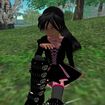Difference between revisions of "User:Lum Pfohl/LSL Goodies/HI-WA Occupancy Counter System"
Jump to navigation
Jump to search
m (Finished building out the document - ready for typo review and fine tuning of content) |
|||
| Line 2: | Line 2: | ||
|- | |- | ||
|valign="top"| | |valign="top"| | ||
__NOTOC__ | |||
<div id="box"> | <div id="box"> | ||
==Help Island/Welcome Area Occupancy Counter System - Overview== | ==Help Island/Welcome Area Occupancy Counter System - Overview== | ||
| Line 9: | Line 9: | ||
This is a system of scripts, sensors and servers designed to sense, collect, report and disseminate information on the occupancy levels of Orientation Islands, Help Islands, Welcome Areas and Infohubs. | This is a system of scripts, sensors and servers designed to sense, collect, report and disseminate information on the occupancy levels of Orientation Islands, Help Islands, Welcome Areas and Infohubs. | ||
Since this is such a big system (for me, at least - took my three months to write it!), I need to discuss each part in sections. | |||
* [[User:Lum Pfohl/LSL Goodies/HI-WA Occupancy Counter System/Business Requirements|Business Requirements Document]] | |||
* [[User:Lum Pfohl/LSL Goodies/HI-WA Occupancy Counter System/System Architecture|System Architecture]] | |||
* [[User:Lum Pfohl/LSL Goodies/HI-WA Occupancy Counter System/Collection Server|Collection Server]] | |||
* [[User:Lum Pfohl/LSL Goodies/HI-WA Occupancy Counter System/Relay Servers|Relay Servers]] | |||
* [[User:Lum Pfohl/LSL Goodies/HI-WA Occupancy Counter System/Sensors|Sensors]] | |||
: | * [[User:Lum Pfohl/LSL Goodies/HI-WA Occupancy Counter System/Endpoint Devices|Endpoint Devices]] | ||
* [[User:Lum Pfohl/LSL Goodies/HI-WA Occupancy Counter System/Distribution System|Distribution System]] | |||
* [[User:Lum Pfohl/LSL Goodies/HI-WA Occupancy Counter System/Documentation|Documentation]] | |||
| | |||
| | |||
LSL | |||
[ | |||
[[User: | |||
</div></div> | </div></div> | ||
[[User:Lum Pfohl|Lum Pfohl]] 13:58, | [[User:Lum Pfohl|Lum Pfohl]] 13:58, 1 September 2008 (PST) | ||
|valign="top" width="200 px"| | |valign="top" width="200 px"| | ||
{{Lum's Quick Links}} | {{Lum's Quick Links}} | ||
|} | |} | ||
Revision as of 17:52, 1 September 2008
Help Island/Welcome Area Occupancy Counter System - OverviewBackgroundThis is a system of scripts, sensors and servers designed to sense, collect, report and disseminate information on the occupancy levels of Orientation Islands, Help Islands, Welcome Areas and Infohubs. Since this is such a big system (for me, at least - took my three months to write it!), I need to discuss each part in sections. Lum Pfohl 13:58, 1 September 2008 (PST) |
|
